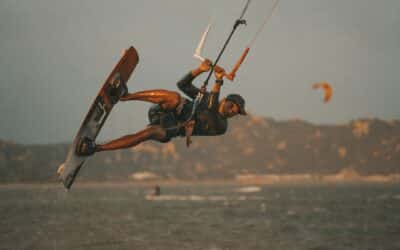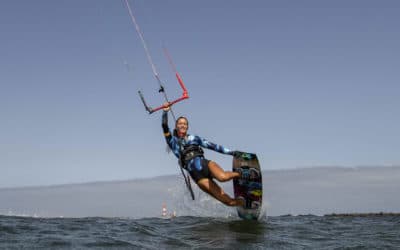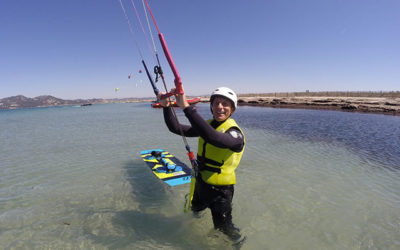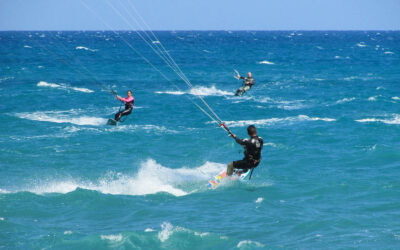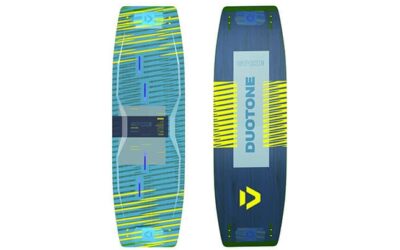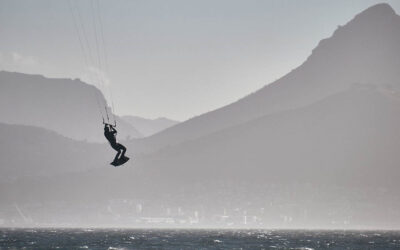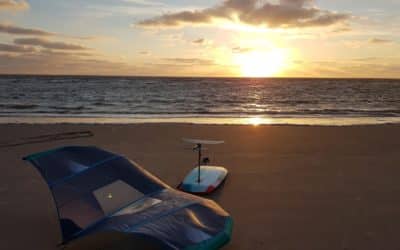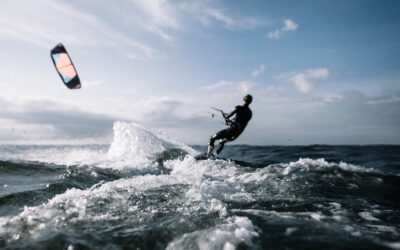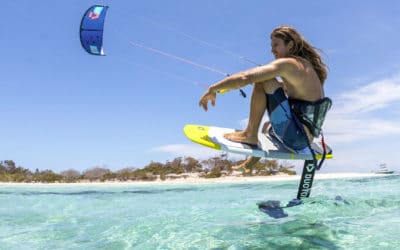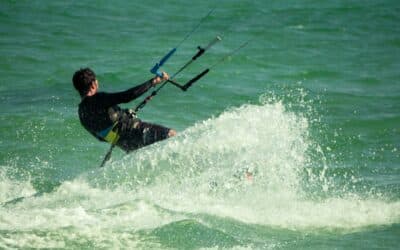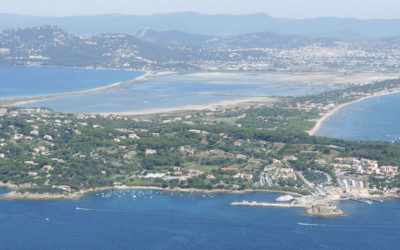Choosing your Kitesurfing Wetsuit: the Ultimate Guide
Imagine yourself on Almanarre beach in Hyères, ready to challenge the waves and feel that adrenaline rush unique to kitesurfing. But a question is nagging at you: “Which wetsuit should I choose?” Don’t worry, we’re going to dive into the deep blue of this dilemma with as much energy as you’ll have on your board.
Understanding Neoprene Thickness

But be careful, thickness isn’t everything. Opting for armor-like neoprene might seem wise, but it can quickly turn your movements into a robot dance. The balance between thermal insulation and freedom of movement is crucial. This is where the flexibility and elasticity of the neoprene come into play.
Water Temperature: a Decisive Factor
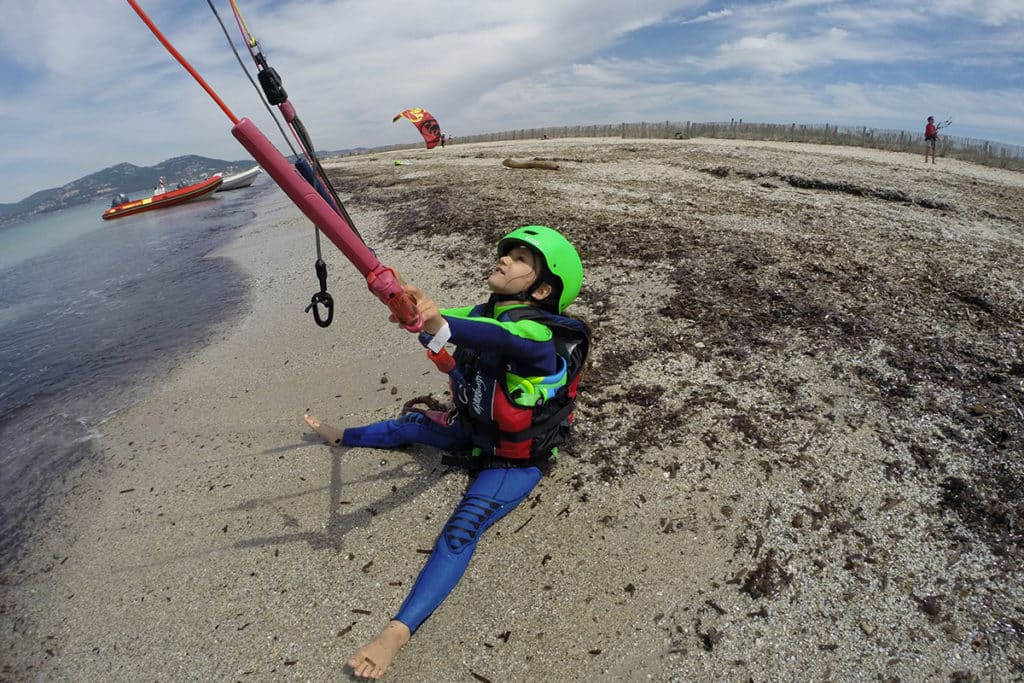
- For waters above 20°C, a lighter wetsuit like a shorty or even a neoprene jacket is sufficient.
- Between 15°C and 20°C, a 3/2 mm full wetsuit will keep you comfortable and flexible.
- Below 15°C, opt for a 5/4 mm thickness to avoid the walking ice cube syndrome.
It’s a common mistake to underestimate the wind chill. Even in warm weather, constant gusts can make the experience unpleasantly chilly without the right protection. Therefore, understanding how to choose your kitesurfing wetsuit is essential.
Inner Linings Make the Difference
Never overlook inner linings when making your choice. They are often made of quick-drying materials and add an extra layer of warmth. A bit like grabbing a warm blanket after a long day — except this one goes wherever you go.
At KGG in Hyères, Greg highlights how some brands offer thermal linings that act like a warm oven, while others prioritize lightness and drying efficiency. In any case, it’s best to ensure your wetsuit has a good ability to protect you from the elements while remaining comfortable.
Closure System and Seams: Choosing for Durability
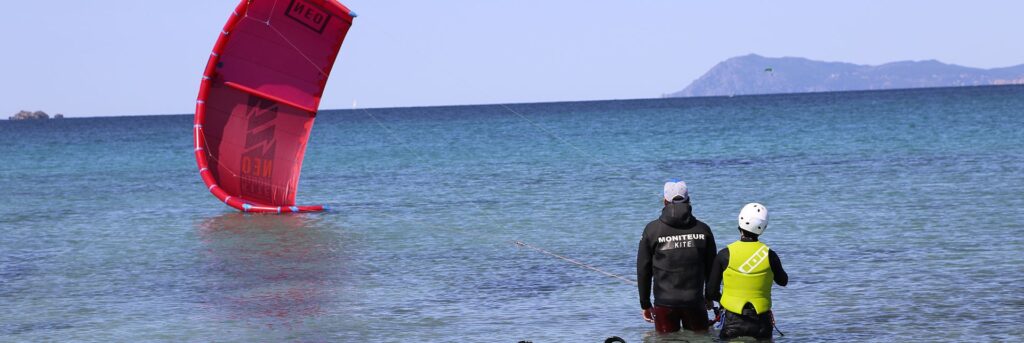
And let’s talk about seams. Choosing a wetsuit solely based on its design would be as risky as choosing a surfboard just because it shines in the sun. Glued, stitched, and sealed seams provide extra protection against water. The more robust they are, the longer your wetsuit will maintain its quality.
Neoprene Quality
Another topic that deserves some airtime! The quality of the neoprene makes all the difference. A high-end material will have more flexibility, durability, and offer better elasticity. With quality comes price. But think of it as an investment: a good wetsuit will stay with you everywhere and for a long time.
At KGG, Colin insists, saying: “A wetsuit is like a good wine; you don’t skimp on the means.” Adopting a high-end product promises you successful and comfortable kite sessions.
Choosing the Right Wetsuit Size
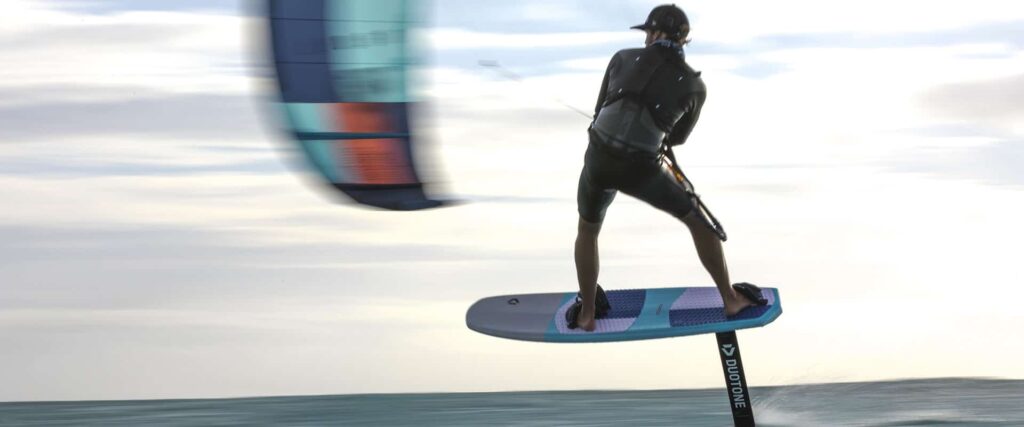
Pay attention to the standardized measurements available from retailers. If possible, try it on! Nothing beats a real-world test to check its flexibility and how it fits your body. Too loose, it will let in water; too tight, it will hinder your performance.
Test before Buying
Are you in Hyères? Go say hello to Greg and Colin. These passionate experts sometimes offer direct testing of their equipment at Almanarre Bay. What better way than to judge for yourself if this specific model will be perfect for facing both the mistral wind and the gentle Mediterranean chop.
With these valuable tips, choose a wetsuit that truly suits you rather than just one based on current trends. Your best sessions require the best equipment!
Essential FAQs on Choosing your Kitesurfing Wetsuit
It all depends on the water temperature, but generally for beginners in temperate zones, a 3/2 mm full wetsuit is sufficiently protective while offering good mobility.
Absolutely! Taking lessons with professionals like those at KGG allows you to try various equipment and receive personalized advice, adapted to your body type and riding style.
After each use, always rinse your wetsuit with fresh water, let it dry in the shade, and avoid hanging it by the shoulders to prevent altering its shape. Store it in a cool place to preserve the quality of the neoprene.
Yes, the choice between a front or back zip can affect your comfort and desired waterproofing. The front zip tends to better prevent water infiltration, although its handling requires more physical effort and technique.
Search
Catégories
Recent Posts
Suivez-nous !
